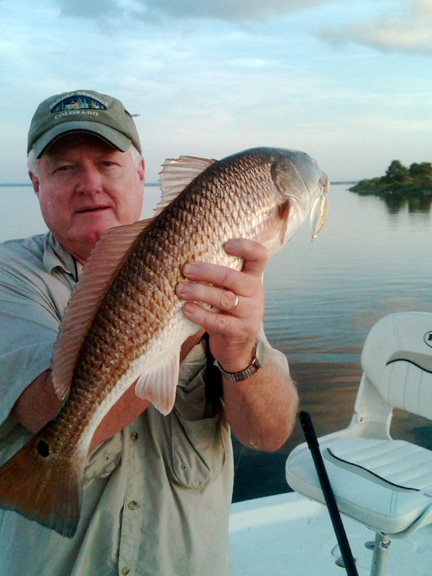
Redfish, speckled trout bag limits raised
By Stan Kirkland, FWC
Meeting in Key Largo this week, the Florida Fish and Wildlife Conservation Commission (FWC) approved changes affecting red drum, spotted seatrout and several species of sharks.
For red drum, which anglers sometimes refer to as redfish, there are now three management areas in the state – the Northwest, Northeast and South. Other changes included increasing the daily bag limit from one to two fish in the Northwest and Northeast areas, establishing a statewide vessel limit of eight fish and setting a maximum transport limit on land of six fish per person.
Under current regulations, a legal-sized red drum for harvest must measure from 18 – 27 inches. The legal size limit is unaffected by the changes.
The conservation and management of red drum in Florida waters is a modern day success story. As a result of severe overfishing in the 1980s, Florida fisheries managers set a one-fish red drum bag limit in 1989 and at the same time banned the sale of red drum.
Through the intervening years it’s fair to say that red drum stocks have prospered in Florida waters. A recent stock assessment by the Florida Fish and Wildlife Research Institute indicates red drum escapement rates (the proportion of fish surviving through age 4, relative to the number that would have survived to that age if there were no fishery) have been consistently above the FWC’s 40-percent management goal in the northern areas of the state.
Responding to a 2010 spotted seatrout stock assessment that shows seatrout numbers exceeding management goals across the state, Commissioners voted to remove the recreational February season closure in northern Florida and the November and December closure in southern Florida.
Other major changes included increasing the recreational seatrout bag limit from five to six fish in Northeast Florida; lengthening the commercial seasons based on regions; changing the commercial vessel limit when two licensed commercial anglers are on board; and redefining where spotted seatrout are managed by splitting the state into four management zones (from three).
Regulation changes affecting red drum and spotted seatrout will take effect Feb. 1, 2012.
Commissioners also prohibited the harvest and possession of tiger sharks and great, scalloped and smooth hammerhead sharks from state waters effective Jan. 1, 2012. All four species can still be caught and released in state waters.
It is legal to harvest the four species in federal waters. In the Gulf of Mexico, federal waters begin nine nautical miles offshore. On the Atlantic side, federal waters begin at three nautical miles.
FWC made the shark harvest changes after hearing from anglers, concerned citizens and shark researchers, concerned about the future survival of the four species. Florida waters are recognized for their importance for a number of marine species, including providing habitat for young sharks.
To learn more, visit MyFWC.com.
